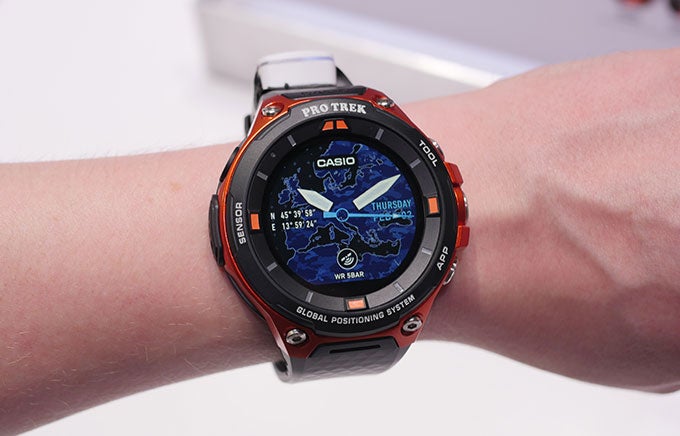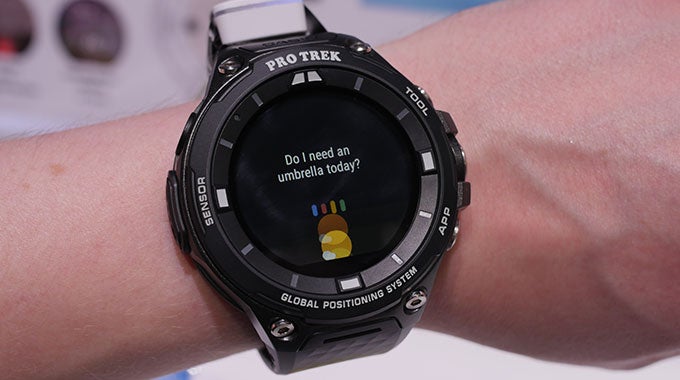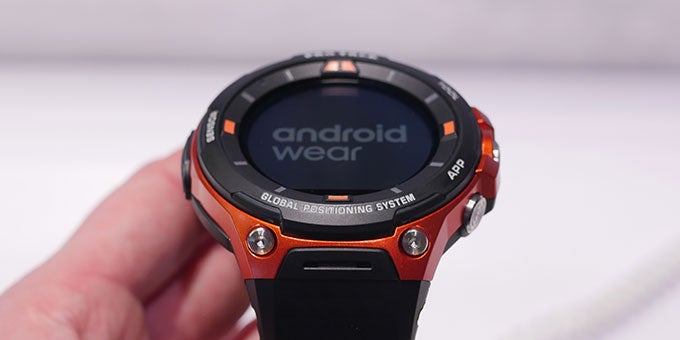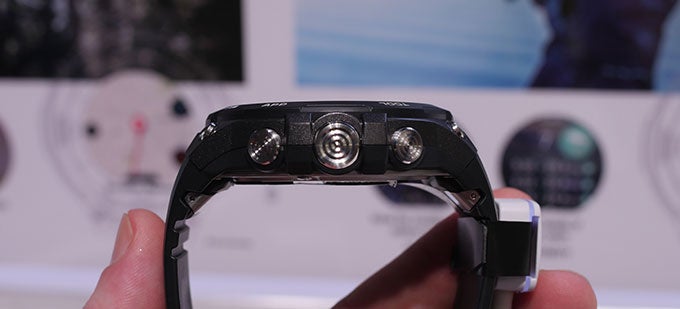Hands-on with the GPS-enabled Casio Pro Trek Android Wear 2.0 smartwatch

Design
Even the most popular smartwatches can come across looking a little chunkier than we'd prefer for our wearables, a hard-to-avoid-consequence of cramming in all those electronics, display tech, and a battery with enough juice to drive it all. And while other companies struggle to keep their designs down to a sensible size, Casio's found success by embracing the idea of a thick, chunky, rugged-as-all-get-out smartwatch, and the WSD-F20 only pushes that aesthetic further.

Display
Circular-screened smartwatches are among the most popular options available, and Casio doesn't do wrong by following that trend here – especially because that helps the WSD-F20 fit so gracefully in with the rest of the company's lineup. But while the choice to go in this direction may be a wise one, it's hard to overlook the increasingly dated appearance of this flat-on-the-bottom, Moto 360-style screen. Considering the users this watch is going after, that's not going to be a deal-breaker, but it is worth mentioning.
Functionally, the watch pulls off the same dual-layer LCD action as last year's model, stacking a full-color traditional smartwatch panel and a dumbwatch-like monochrome LCD on top of another. When battery life's no issue, the watch can display content through both at once, and you can stretch its operational life for weeks upon weeks by forgoing smart features and only using the simple time-only readout.
User interface
One of the most interesting things about the WSD-F20's launch is the software the smartwatch runs, and unlike every other Android Wear model shipped to date, this one arrives with the long-in-development Android Wear 2.0. That brings a refreshed UI alongside plenty of new features, many with the aim of enhancing smartwatch independence. While using older Android Wear models meant spending plenty of time on your smartphone setting things up, Android Wear 2.0 brings previously phone-only functionality to the watch itself.
We'll see other smartwatches offering the same sort of feature set soon, and can look forward to updates hitting some existing models, but for the moment Casio's model is serving as a bit of a trailblazer – so if you like to be on the bleeding edge, this is a worthwhile smartwatch to consider.

Sensors and connectivity
Like the first Smart Outdoor Watch, Casio's latest model is armed with sensors ready to measure altitude, air pressure, compass orientation, and detect motion. And once again, the watch talks to the world over Bluetooth and Wi-Fi – no cellular option here, even with Android Wear 2.0.
But we still get a major upgrade along these lines with the arrival of GPS reception – and how Casio saw fit to skip that critical feature for the WSD-F10, we just can't say. Thankfully, it's here now, equipping the F20 to guide you through the wilderness as you jog, hike, or tear up the bike paths.
Knowing where you are is well and good, but it takes more than a GPS signal alone to make that information meaningful – here, Casio makes the most of this new feature by supporting offline map storage, as well as a Location Memory mode to help you record points of interest for later review.
Battery
Casio's not sharing a lot of technical data about the watch's battery just yet, but does say that users should expect endurance similar to the first-gen model: that is, a bit better than a day of full-functionality operation, or north of a month of power when you're using the monochrome LCD for time-only mode.
Also like last year's watch, you'll recharge the wearable through a unique magnetic side-mounted power port. The magnetic connector isn't the strongest we've come across, and has a habit of coming loose a little too easily, but it does help avoid the need of a slightly more bulky docking station.

Price
All this hardware doesn't come cheap, and you can look forward to forking over about $500 for the Pro Trek Smart Outdoor Watch when sales get underway in April. That's a serious chunk of change for any smartwatch, but the fact that Casio feels confident to return to this price point – the same at which it introduced the first-gen model – does suggest that the company really feels confident that shoppers are willing to pay so much for its smartwatches. You'll have to decide for yourself if that's an investment you're willing to make; while you mull it over, check out out hands-on video of the WSD-F20 in action:













Things that are NOT allowed: